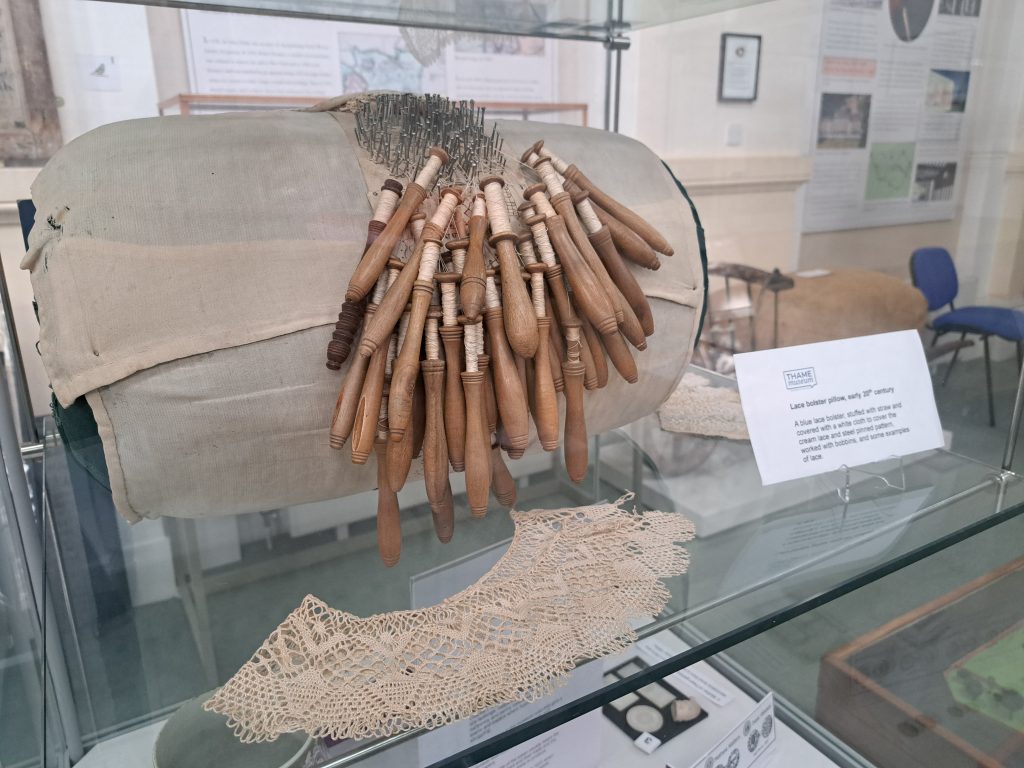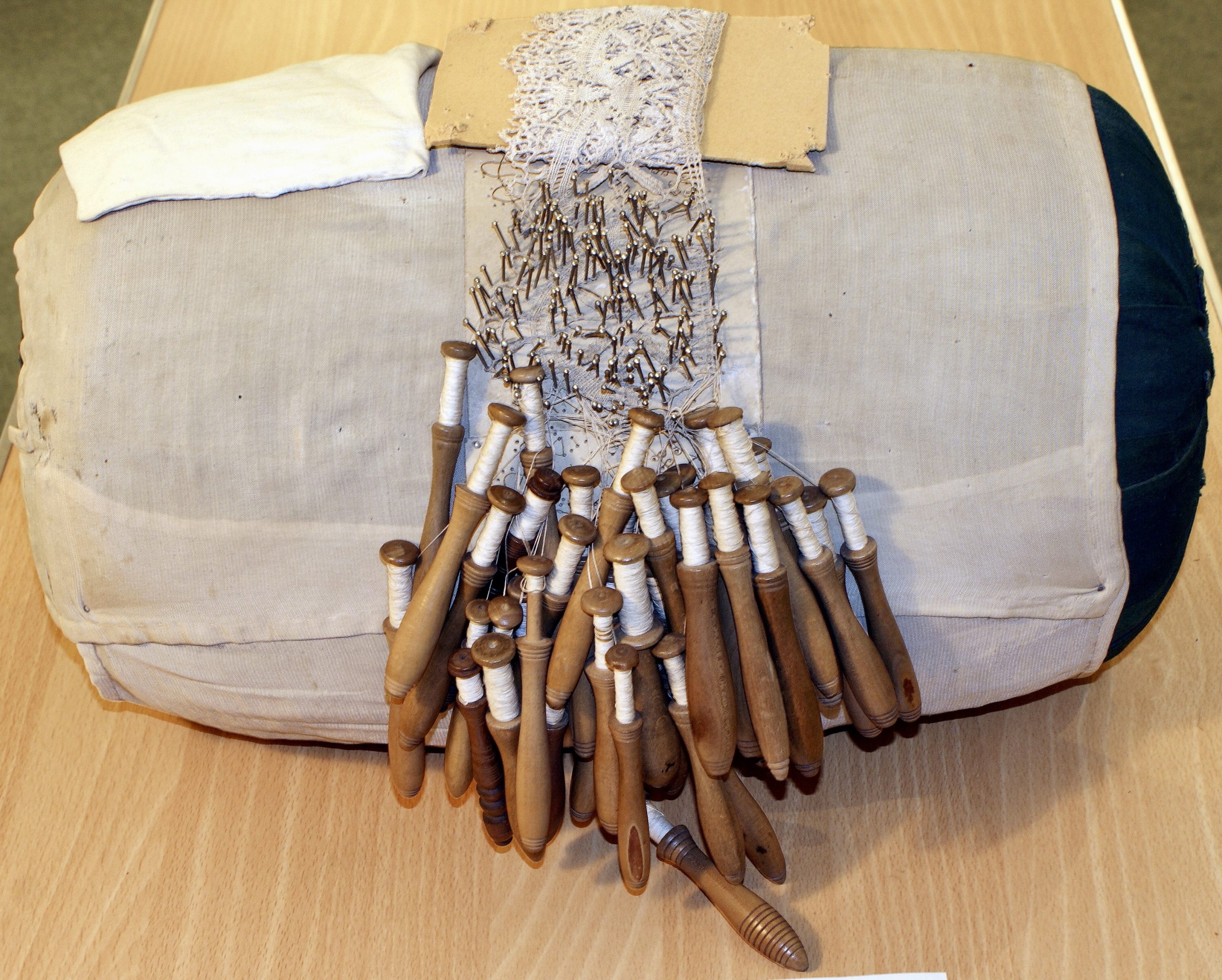Blue lace bolster pillow

From the early 1900s, Blue lace bolster stuffed with straw and a steel pinned pattern worked with bobbins, covered with a white cloth to protect the cream lace.

Lace making pillows or bolsters were tightly packed with straw and covered with fabric, often blue so the lace was clearly visible. The lace pattern was marked on parchment and attached to the pillow with pins and then the many threads were plaited in intricate ways using the bobbins to form the pattern.
Lace has been made in England since the 16th century, when the craft of lace making was probably brought here by Protestant refugees fleeing persecution in Europe. Many settled in villages in Buckinghamshire and passed on their skills to local residents. There were fewer in Thame, although some lace was produced here.
Lace making was mostly a cottage industry for women and although skilled workers were paid well for their lace, it was demanding and time-consuming work. Good light was essential so workers sat outside or by the window in bad weather and for many this led to health problems, especially poor eyesight.
With the industrial revolution in Britain came the introduction of machine lace and eventually it was impossible to make a living from handmade lace. From the records of the 1851 census for Thame Workhouse, there are several residents identified as lace makers, from local villages such as Crendon, Brill and Shabbington,
